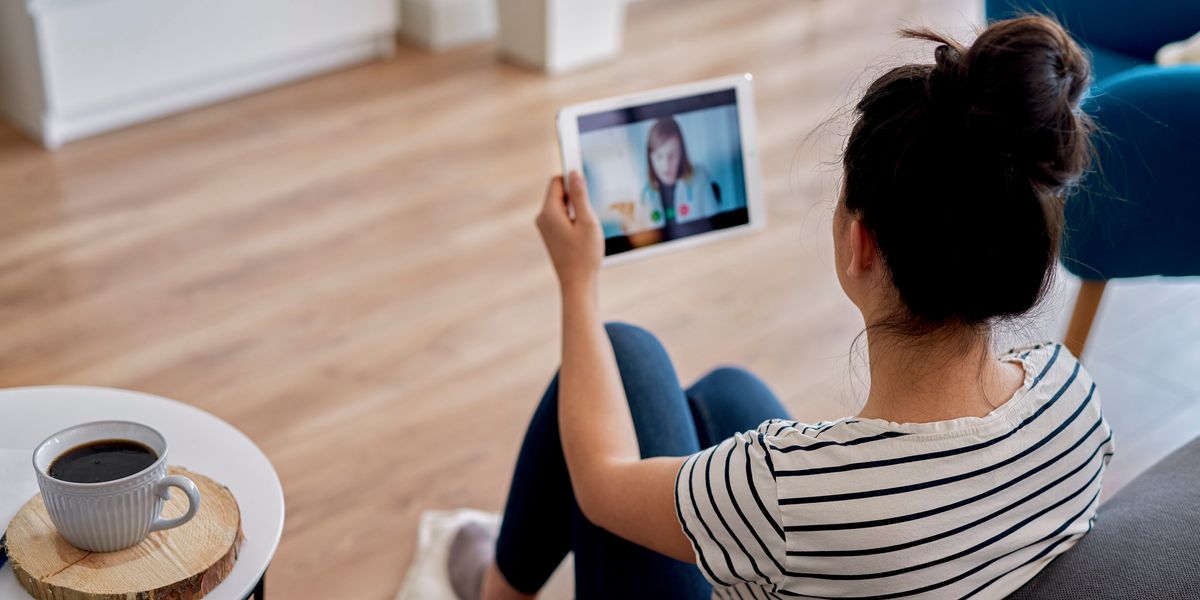Doctors on Demand: A Dancer's Guide to Telehealth
These days, dancers can livestream everything from Graham technique classes to pointe shoe fittings without ever leaving home. But is it safe to get your doctor’s appointments on demand?
“Telehealth” or “telemedicine” is essentially what happens anytime you use electronic communication—video chats, emails and patient portals—to get health care. Instead of seeing a doctor IRL, telehealth allows you to connect with a medical provider online. Through virtual appointments, doctors can answer questions, make diagnoses and even prescribe medications.
Since the outbreak of the COVID-19 pandemic, many physicians have expanded their telehealth practices so they can safely get in touch with patients sans contact. And new technological advancements, like HIPAA-compliant apps, have made it easier than ever to access everything from nutrition counseling to physical therapy, anytime and anywhere.
The Benefits:
Scheduling Flexibility
Telehealth is extremely useful for dancers who have hectic schedules and can’t show up to doctor’s appointments during normal office hours, explains Kathleen Davenport, company physician for Miami City Ballet and director of physiatry at the Hospital for Special Surgery Florida. Not only is it more convenient for dancers to squeeze in virtual appointments between rehearsals, but doctors may have more availability, too.
On-the-Go Care
For dancers who travel or tour, being able to chat on the go enables you to continue seeing the same doctor on a consistent basis, Davenport says. “If you get started with a treatment plan, and then you have to go see a new doctor in a different state every month—or a different country, even—that is a very disjointed health-care plan,” she says. “Telemedicine can help that continuity of care.”
Specialists at Your Fingertips
Dancers have highly specific medical needs, but it’s not always financially or logistically feasible to travel to see a specialist, Davenport says. With telehealth, you can get in touch with a dance expert who’s licensed to treat you, even if you’re located in a different city. Need help finding a clinician? The website Doctors for Dancers (doctorsfordancers.com) has a database of dance experts around the country, and many of them provide virtual counseling.
The Drawbacks:
No Hands-on Adjustments
There are times when telehealth isn’t appropriate, notes Jenna Kantor, a physical therapist who works with performing artists. For example, recovering from surgery is a delicate process that can be riddled with complications. “It’s definitely a situation where we need our hands on you more,” she says.
Or if you have an injury that’s not straightforward, see someone in the flesh, Davenport says. “There can be an increased risk of missing something if I’m not there in person to actually be able to lay my hands on someone,” she says.
Less Personal Interaction
Yasi Ansari, a registered dietitian and certified specialist in sports dietetics, says it’s easier to build a relationship with clients when you meet face-to-face. This is especially true when working with high-risk athletes, such as someone in treatment for an eating disorder, she says. “I can tell a lot from an athlete’s body language when we talk about things that might make them a little bit uncomfortable,” Ansari says. “I’m able to feel their energy, keep an eye out for nonverbal cues and ask further questions when those things come up.”
Location Matters
The specific laws surrounding telemedicine can vary from state to state. Doctors and other clinicians need to be licensed in the state where they’re practicing, even if they’re calling in from somewhere else. Given this, your options for finding a clinician may be somewhat limited. If you find someone who seems great, but they don’t practice in your state, Kantor says you should ask if they can recommend someone who does.
Before You Try It…
Consider an in-person consultation
If you plan to see a clinician regularly, it’s a good idea to visit them in-person for the first appointment, physical therapist Jenna Kantor advises. “With video, you can catch a lot, but actual physical contact you have to do at least once,” she says. After an initial in-person appointment, she typically transitions to video if the client prefers. She’ll send demonstrations of rehab exercises, and clients will send her clips from rehearsals so she can have a clear view of how their body is moving.
Check your insurance
Telehealth might be convenient, but that doesn’t necessarily mean it’s cheaper. Plus, not all health insurance companies and policies will cover virtual appointments. “A lot of times, insurance companies see these as lesser, even though they can be covering the exact same information as, say, a follow-up visit,” physician Kathleen Davenport says. Don’t have health insurance? Some online services, like Doctor On Demand, let you see a doctor for a flat rate without coverage.
Find what works for you
Some people find video-chatting with their doctor totally awkward, whereas others feel like they can open up more outside of a sterile doctor’s office. “Through virtual counseling, some people are a little bit more comfortable to talk about a variety of feelings, whereas when we sit down really formally, sometimes it takes a while to break the ice,” dietitian Yasi Ansari says. The bottom line: “Know thyself,” says Davenport, and choose the relationship that will make you feel most comfortable.




